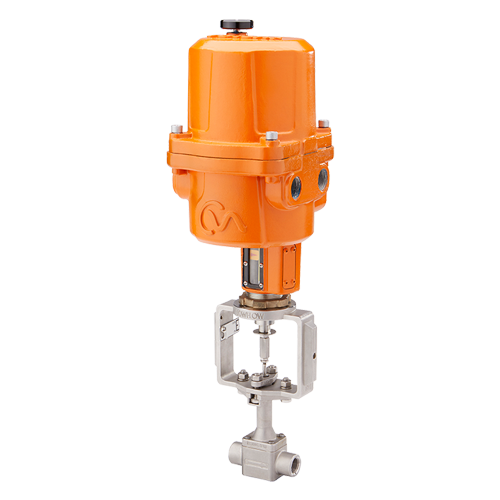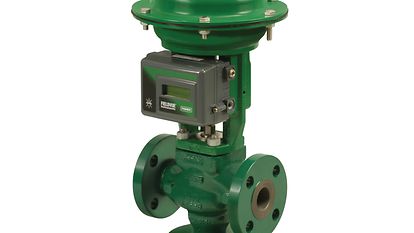How Control Valves Effect Power Performance in Industrial Settings
How Control Valves Effect Power Performance in Industrial Settings
Blog Article

Maximize Energy Financial Savings and Convenience With Advanced Structure Automation Controls
In the realm of modern-day design and center management, the integration of advanced building automation regulates stands as a pivotal advancement. The merging of modern technology and sustainability has actually birthed a new age where energy efficiency, comfort optimization, and operational streamlining are no much longer attainable realities but distant goals. By taking advantage of the power of automation, buildings can adjust, respond, and develop in manner ins which were once unbelievable. The capacity for substantial energy financial savings and boosted convenience is not just an opportunity yet a pledge waiting to be satisfied. This standard shift in building administration holds the crucial to opening a world where ecological conscientiousness and resident health harmoniously coexist within the walls of our frameworks.
Energy Performance Advantages
Energy efficiency benefits can considerably minimize energy usage and functional costs in structures. Energy-efficient systems, such as sophisticated building automation controls, can maximize the usage of resources like air conditioning, heating, and lights, leading to reduced power expenditures over time.
Additionally, boosted power performance can lengthen the life-span of structure equipment and systems. By running a lot more effectively, HVAC systems, light, and various other structure parts experience much less deterioration, causing decreased upkeep and substitute expenses. Furthermore, energy-efficient buildings usually regulate greater building worths and rental rates, offering long-lasting economic benefits to owners.
Additionally, power efficiency can improve occupant convenience and performance. Appropriately managed interior environments with ideal lighting and thermal conditions produce an even more pleasurable and helpful workspace, causing improved worker satisfaction and efficiency. Generally, the power performance benefits connected with sophisticated structure automation controls are complex, incorporating price savings, environmental stewardship, and resident wellness.
Improved Convenience Control
Enhancing convenience control in building settings requires a sophisticated combination of sophisticated automation systems for optimum owner wellness. By making use of innovative structure automation controls, facilities can tailor the indoor setting to fulfill the details needs and preferences of residents. These systems enable exact guideline of temperature, ventilation, and lighting, creating a comfortable and effective atmosphere. Owner complete satisfaction and productivity are very closely connected to thermal comfort, making it important to have systems in position that can adapt to altering conditions in real-time.
By including these sophisticated controls, buildings can not just boost convenience yet also improve energy efficiency by enhancing system operations based on actual occupancy and usage patterns. Eventually, focusing on owner convenience via innovative automation systems leads to a more pleasurable and healthier indoor environment.
Operational Efficiency Improvements

In addition, the execution of real-time tracking and analytics tools enables building operators to recognize energy ineffectiveness and functional abnormalities without delay. By continuously keeping an eye on power use patterns and system performance metrics, modifications can be made in real-time to maximize energy consumption and make sure peak functional effectiveness. control valves. In addition, integrating demand action strategies into structure automation controls can even more boost operational effectiveness by dynamically adjusting power usage based on grid conditions and pricing signals
Indoor Climate Optimization
Effective interior climate optimization is a fundamental element of building automation controls, making certain residents' convenience and health while making best use of power cost savings. By using advanced sensing units and controls, developing automation systems can continuously check and change temperature, humidity levels, air high quality, and air flow to develop an optimum interior setting. Keeping consistent and comfy problems not only improves owner contentment however additionally increases efficiency and general wellness.
Indoor climate optimization likewise plays an important function in power performance. By fine-tuning ventilation, cooling, and heating systems based on real-time data and occupancy patterns, constructing automation controls can significantly decrease energy usage - control valves. For instance, carrying out methods such as demand-controlled air flow and thermal zoning discover here can aid minimize power waste while guaranteeing that each location of the structure obtains the essential conditioning.

Sustainable Atmosphere Production
Building automation regulates not only maximize indoor environment conditions for energy efficiency and owner convenience yet likewise lay the structure for producing a lasting atmosphere via calculated monitoring of sources and systems. By integrating innovative building automation technologies, such as sensing units, actuators, and smart software program, facilities can adjust and check check here energy use in real-time to decrease waste and reduce their carbon impact. These systems enable predictive upkeep, identifying prospective problems prior to they escalate and maximizing tools efficiency to enhance longevity and effectiveness.
In addition, sustainable environment development expands past power administration to incorporate water conservation, waste reduction, and indoor air high quality renovation. Structure automation controls can regulate water usage, identify leaks, and make sure correct waste disposal methods, adding to total sustainability efforts. Furthermore, by monitoring and controlling air flow and filtration systems, these innovations improve passenger wellness and productivity while reducing energy usage connected with a/c procedures.
Final Thought
Finally, advanced building automation regulates deal considerable benefits in terms of power financial savings, comfort control, operational effectiveness, indoor climate optimization, and creating a sustainable environment. By applying these controls, structures can accomplish ideal performance while decreasing energy intake and boosting passenger convenience. It appears that using innovative automation innovation is important in improving building performance and creating an extra sustainable future.
Energy efficiency advantages can substantially lower power intake and functional expenses in buildings. In general, the power performance advantages connected with sophisticated structure automation controls are multifaceted, incorporating expense savings, ecological stewardship, and passenger well-being.
In addition, including need response techniques into building automation controls can home additionally improve functional performance by dynamically adjusting energy usage based on grid conditions and prices signals.
Building automation manages not just maximize interior environment problems for energy effectiveness and passenger convenience yet additionally lay the structure for creating a sustainable environment with critical monitoring of resources and systems.In final thought, progressed building automation controls offer significant advantages in terms of power cost savings, comfort control, operational efficiency, interior environment optimization, and producing a sustainable atmosphere.
Report this page